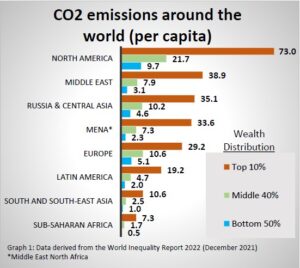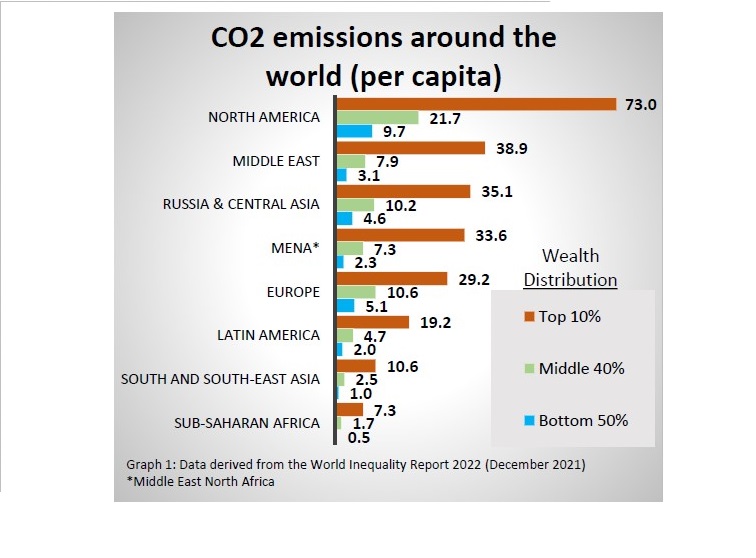The world’s wealthiest are responsible for nearly 50% of carbon emissions

There has been a concentrated international effort to combat climate change. One main focus is on the cutting of greenhouse gas emissions (GHG), carbon dioxide (CO2) being one of main culprits. But where do these emissions come from and who is responsible for the majority of carbon emissions?
According to the World Inequality Report 2022 (December 2021), data analysis by a team of world-leading economists suggests that the richest 10% of the global population produces close to 50% of GHG. Meanwhile, the less wealthy 50% of the global population contribute to just 12% of all GHG.
However, the authors stress the inequalities are “not just a rich vs. poor country issue”. The data presents a picture that there are large emitters of GHG in poor countries and low emitters in wealthy countries.
For instance, wealthy people in East Asia emitted more CO2 per person per year (roughly 39 tonnes) than the poorest people in Europe who contributed about 5 tonnes during the same time frame. Furthermore, when considering the consumption habits of the wealthiest people, those in East Asia emit far more CO2 than affluent Europeans who generate on average 29 tonnes per person, per year.
One of the sharpest contrasts can be seen in North America. The poorest 50% of the population emit less than 10 tonnes, the middle 40% create about 22 tonnes and the wealthy 10% contribute around 73 tonnes of CO2 to the Earth’s atmosphere. (see graph 1 above)
The data also points to the comparable emission levels between the poorest half of the US population (at 9.7 tonnes) and the European middle 40% (at 10.6 tonnes), despite being nearly twice as poor. Researchers suggest the difference is due in large part to the carbon-intensive energy mix in the US. The level of emissions from electricity is nearly double that of the European Union. One need only look at the types of vehicles on the roads. Automobiles in the US tend to be larger and less fuel efficient than those in Europe.
The authors of the Report suggest that in 2021, humans released an estimated 50 billion tonnes of CO2 into the atmosphere. That represents just over 6.5 tonnes of CO2 per person/per year.
When broken down by sector, an overwhelming three-quarters, 75%, of GHG emissions come from our energy consumption. This includes the burning of fossil fuels for things like energy use in buildings and transportation. The agricultural sector is responsible for roughly 12%, while industry and waste produce 9% and 4% of total GHG respectively. (see graph 2)

As countries implement measure to reduce carbon emissions and help fight climate change, the authors of the report suggest that climate policies should target wealthy polluters more on the basis of the large inequalities in emissions. One main concern is that policies like carbon taxes may disproportionately impact low and middle-income groups and have little effect on the consumption habits of wealthier populations.



